there are a few native orchid species that are listed as having been found at one time or another, and one that is supposed to be sort-of 'common' is the autumn coralroot. I have looked for it at clark reservation state park near syracuse, since it was listed in the state herbarium as having been found there in the past. hard to find something very small, especially if you aren't looking at the right time of year or even more likely in the wrong habitat. fellow native orchid seeker frank from eastern pa. came through with having at least two populations of it near where he works. one was along a tiny stream, under beech trees in very moist, rich soil and the other was spread out amongst evergreens and unfortunately, poison ivy (!) in a more-or-less drier habitat. Ken Hull and I met Frank and another fellow native orchid nut Tom from nyc, and went to check them out yesterday. there were a number of embarrassing moments for some members of the expedition that I will refrain from mentioning to protect the delicate constitutions of those involved! (cryptic smile)
that said, autumn coralroot or corallorhiza odontorhiza is a large mouthful for both the common and latin names, for a plant that is quite small with even smaller flowers! I'll shorten the name to AC from here on out. AC is a species or group of similar varieties of the named species, most that are cleistogamous in nature. that means that the flower usually never truly open all the way in this case, and are self-pollinating. the structure of the flower is such that the pollen and stigmatic surface come into contact as the flower bud is growing, so that the ovary starts to swell very quickly the flower doesn't develop fully. so, the plants that develop are pretty similar genetically, since there isn't much recombination of the genes. there may be some cases where a plant that isn't self-pollinating manages to get carried by a pollinator to a plant with self-pollinating flowers, and gets there before the 'flower' is completely closed and may get some new genetic material infused. it may also be that in some cases a plant has open flowers, and other times self-pollinating ones. it did appear that there was some difference in the populations, and there were some that seemed to have more flower than others, while others looked like they never really opened up very much at all. it's tough to get a good picture of something that doesn't really have a hard structure and is pretty small; i'm going to get in my excuses in ahead of time also there was some spotty bright sunlight, so combining that all together with the fact that I need a new ring flash, I hope these pictures look fairly decent (I haven't edited them yet)
also there was some spotty bright sunlight, so combining that all together with the fact that I need a new ring flash, I hope these pictures look fairly decent (I haven't edited them yet)
pics from the first site we visited, one very large, close clump plus a few scattered plants mostly not yet in flower
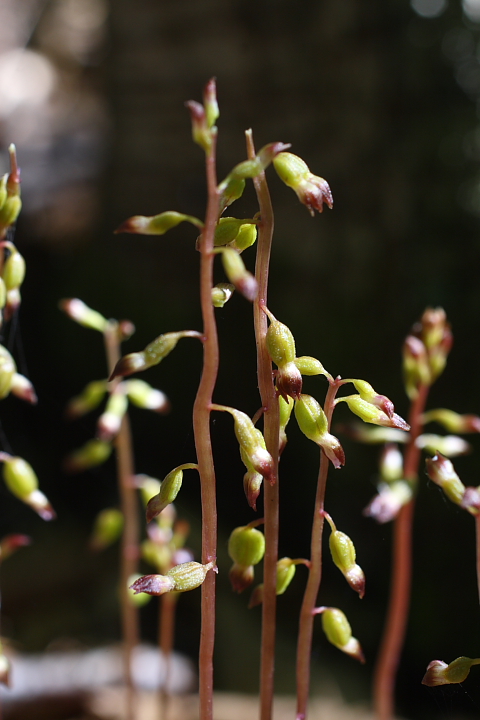 ...
...
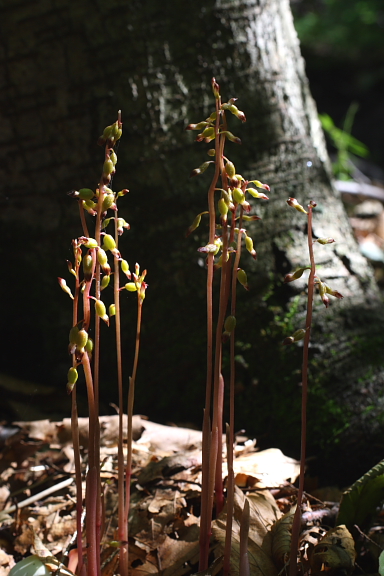
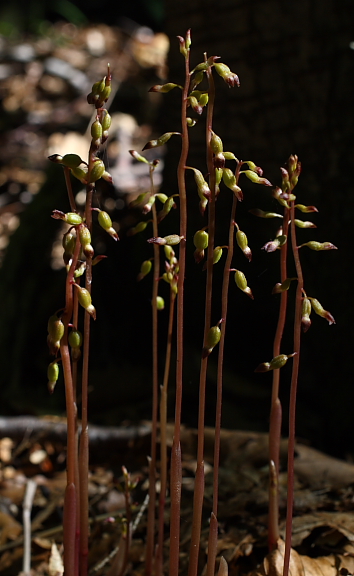 ...
...
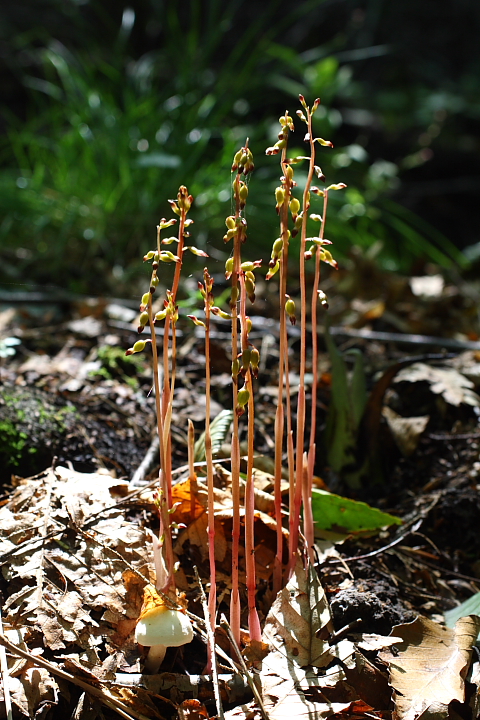
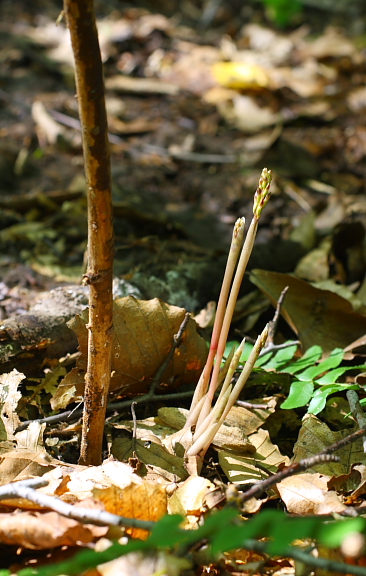 ...
...
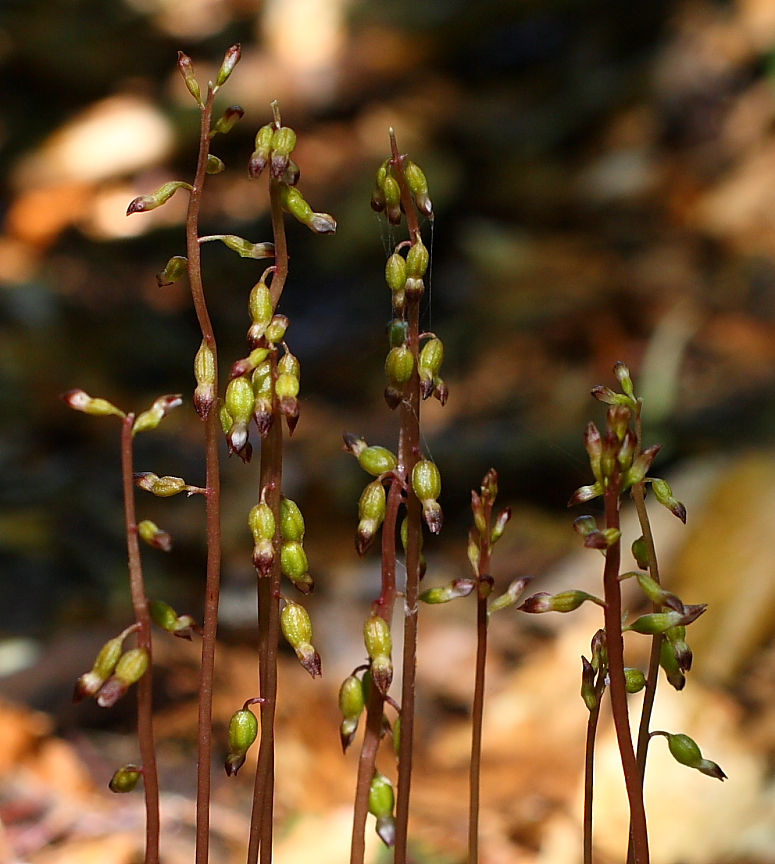
left pic shows a robust seedling not yet up and flowering
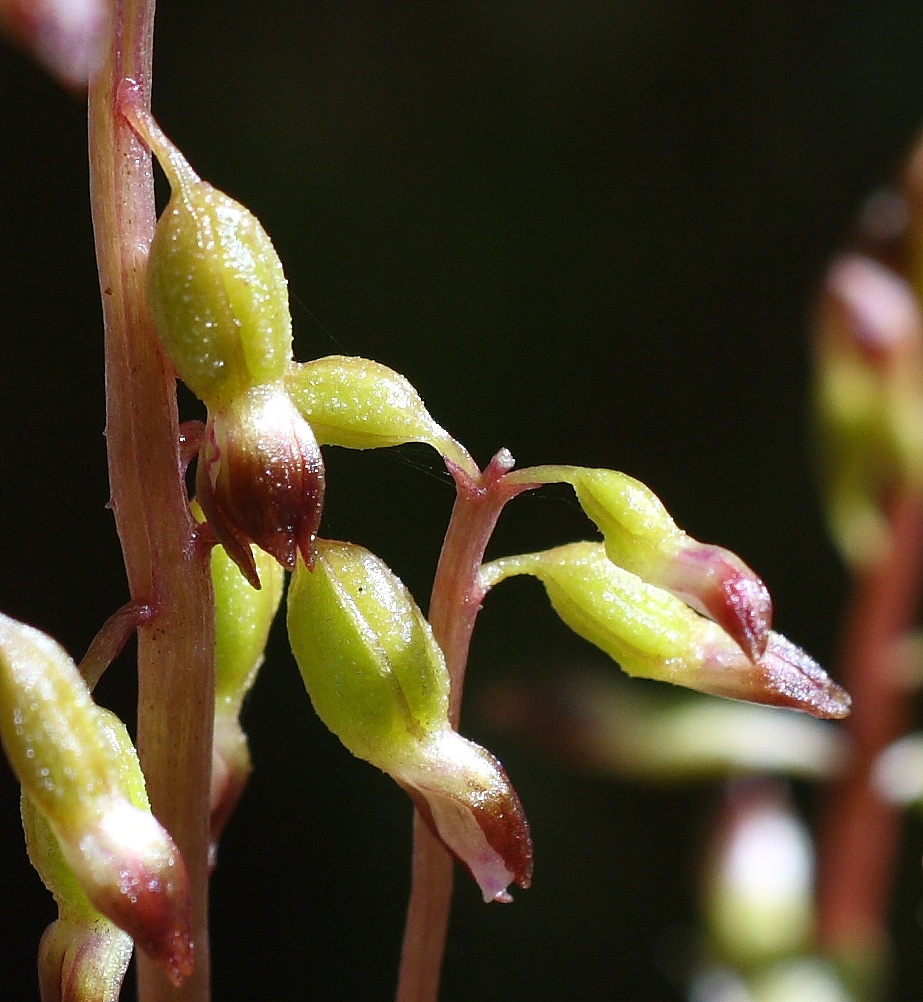 ...
...
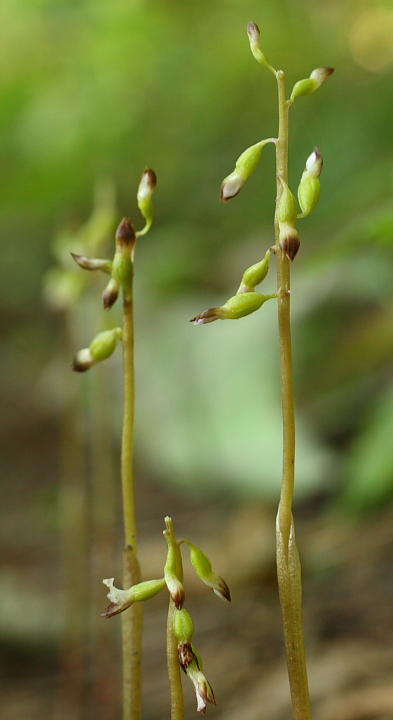
left pic extreme close-up at first site; right pic a plant from second site
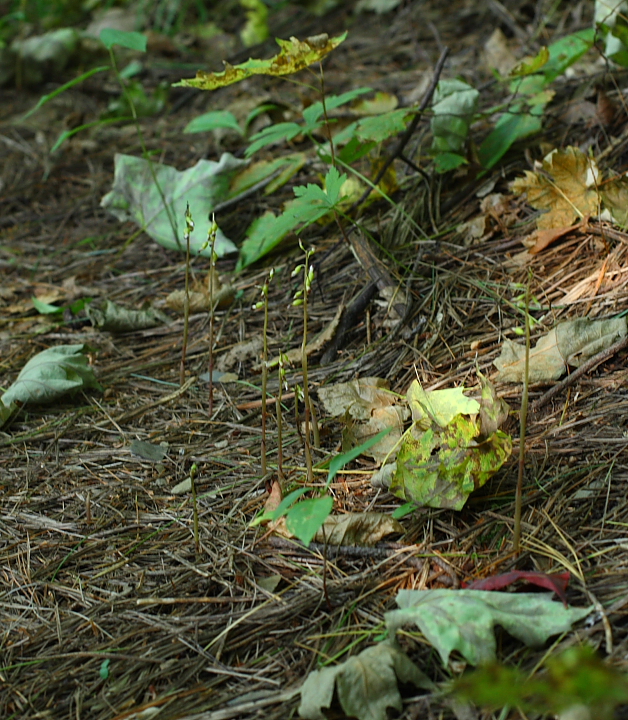 ...
...
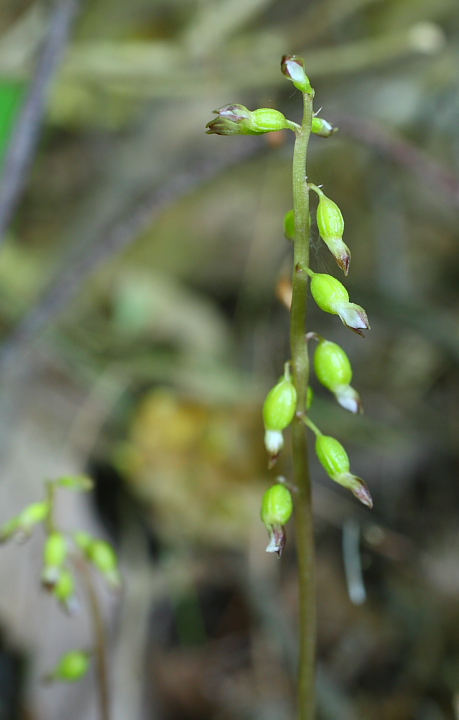
left pic showing cluster of plants right on the edge of trail at second site
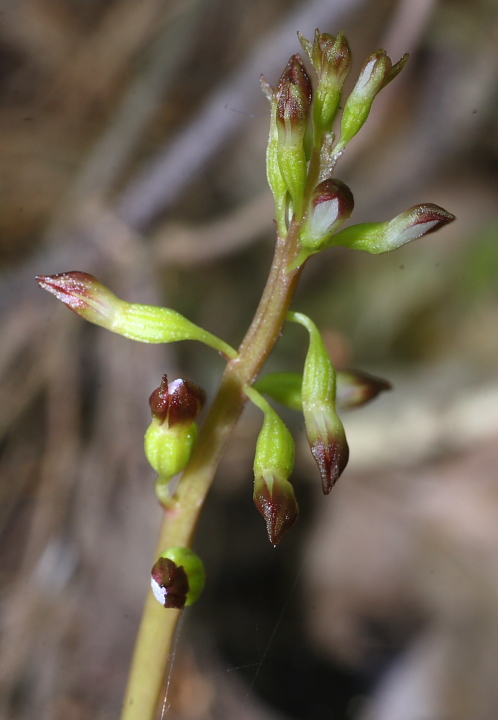 ...
...
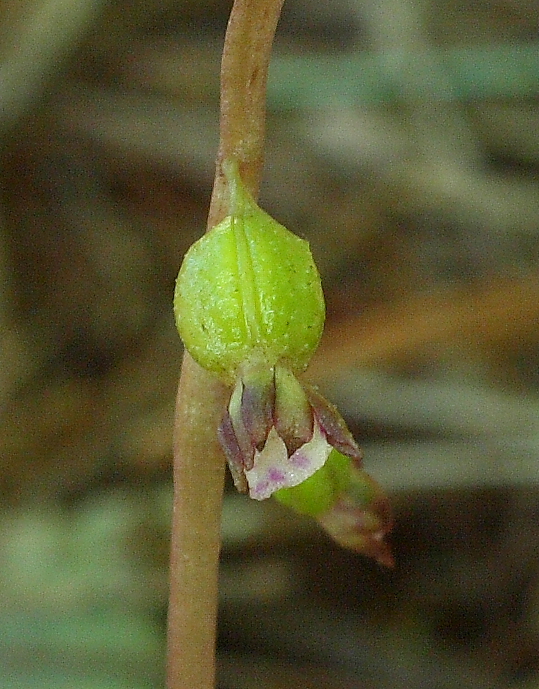
right pic showing best example of 'open flower' that I could get from either site. I probably could have gotten a better picture, but I would have had to change equipment, and since we had to get back to ken's at a certain time and the plant was growing right in poison ivy, I decided to decline the invitation
I forgot to add that these orchids are only about as tall as early coralroot, maybe 8 to 9 inches tall at the most, while many at the second site were six inches or less. They almost seem to be miniature forms of the western spotted coralroot or pink types of the spotted coralroot, but with flowers that don't open
that said, autumn coralroot or corallorhiza odontorhiza is a large mouthful for both the common and latin names, for a plant that is quite small with even smaller flowers! I'll shorten the name to AC from here on out. AC is a species or group of similar varieties of the named species, most that are cleistogamous in nature. that means that the flower usually never truly open all the way in this case, and are self-pollinating. the structure of the flower is such that the pollen and stigmatic surface come into contact as the flower bud is growing, so that the ovary starts to swell very quickly the flower doesn't develop fully. so, the plants that develop are pretty similar genetically, since there isn't much recombination of the genes. there may be some cases where a plant that isn't self-pollinating manages to get carried by a pollinator to a plant with self-pollinating flowers, and gets there before the 'flower' is completely closed and may get some new genetic material infused. it may also be that in some cases a plant has open flowers, and other times self-pollinating ones. it did appear that there was some difference in the populations, and there were some that seemed to have more flower than others, while others looked like they never really opened up very much at all. it's tough to get a good picture of something that doesn't really have a hard structure and is pretty small; i'm going to get in my excuses in ahead of time
pics from the first site we visited, one very large, close clump plus a few scattered plants mostly not yet in flower






left pic shows a robust seedling not yet up and flowering


left pic extreme close-up at first site; right pic a plant from second site


left pic showing cluster of plants right on the edge of trail at second site


right pic showing best example of 'open flower' that I could get from either site. I probably could have gotten a better picture, but I would have had to change equipment, and since we had to get back to ken's at a certain time and the plant was growing right in poison ivy, I decided to decline the invitation
I forgot to add that these orchids are only about as tall as early coralroot, maybe 8 to 9 inches tall at the most, while many at the second site were six inches or less. They almost seem to be miniature forms of the western spotted coralroot or pink types of the spotted coralroot, but with flowers that don't open



